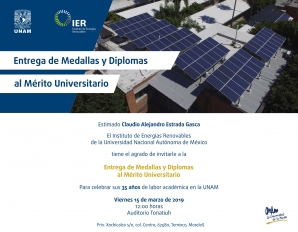Manuel I. Peña-Cruz,Patricio J. Valades-Pelayo,Camilo A. Arancibia-Bulnes,Carlos A. Pineda-Arellano,Iván Salgado-Tránsito, and Fernando Martell-Chavez
Abstract
In this work, the seasonal and yearly optical performance of supported catalyst CPC solar photocatalytic reactors has been theoretically analyzed. A detailed model for the optical response of the anatase catalyst films is utilized, based on the characteristic matrix method, together with Monte Carlo ray tracing simulations. The catalyst is supported over glass tubes contained inside a larger glass tube that functions as receiver of the CPC reflector. Arrangements with four, five, and six tubes are considered. Overall, the four-tube scenario presents the worst performance of all, followed by the five-tube case. In general, the six-tube configuration is better. Nevertheless, important differences can be observed depending on the specific arrangement of tubes. The six-tube case surpasses the absorption rate of all the other configurations when the distance between tubes is extended. This configuration exhibits 27% increased yearly energy absorption with respect to the reference case and 47% with respect to the worst case scenario.

